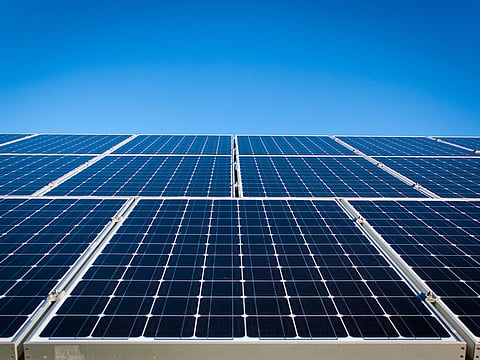Saudi Arabia achieves record low solar electricity costs
By 2030, it is projected that 30 per cent of installed capacity will come from renewables

Dubai: Saudi Arabia has set a new world record for the lowest levelised cost of electricity for solar photovoltaics, achieving $10.4 (Dh38) per megawatt-hour.
Saudi Arabia, along with the UAE and Oman, is set to lead the Middle East's solar energy transition. This leadership is attributed to several key factors: low hurdle rates, large-scale projects, decreasing hardware costs, low labor costs, and high solar irradiance, according to a report by Norwegian business company, Rystad Energy.
The total solar capacity in the Middle East surpassed 16 gigawatts by the end of last year and is expected to reach nearly 23 GW by the end of this year, according to the report.
Rystad Energy projects that by 2030, the region's solar capacity will exceed 100 GW, driven by green hydrogen projects that contribute to an annual growth rate of 30 percent.
By the end of the decade, Saudi Arabia, the UAE, and Oman are anticipated to account for nearly two-thirds of the region's total solar capacity.
Moreover, renewable energy sources, including hydro, solar, and wind, are expected to make up 70 per cent of the Middle East's power generation mix by 2050, a significant increase from 5 per cent at the end of 2023.
Despite this growth, the region will continue to rely heavily on natural gas in the short term, with usage peaking around 2030.
At the end of 2023, 93 per cent of the Middle East's power generation came from fossil fuels, with renewables at 3 per cent, and nuclear and hydro at 2 per cent each.
By 2030, it is projected that 30 per cent of installed capacity will come from renewables, potentially reaching 75 per cent by 2050.
Sign up for the Daily Briefing
Get the latest news and updates straight to your inbox






